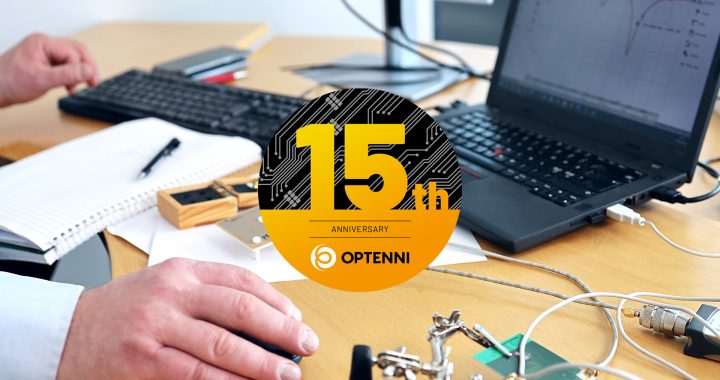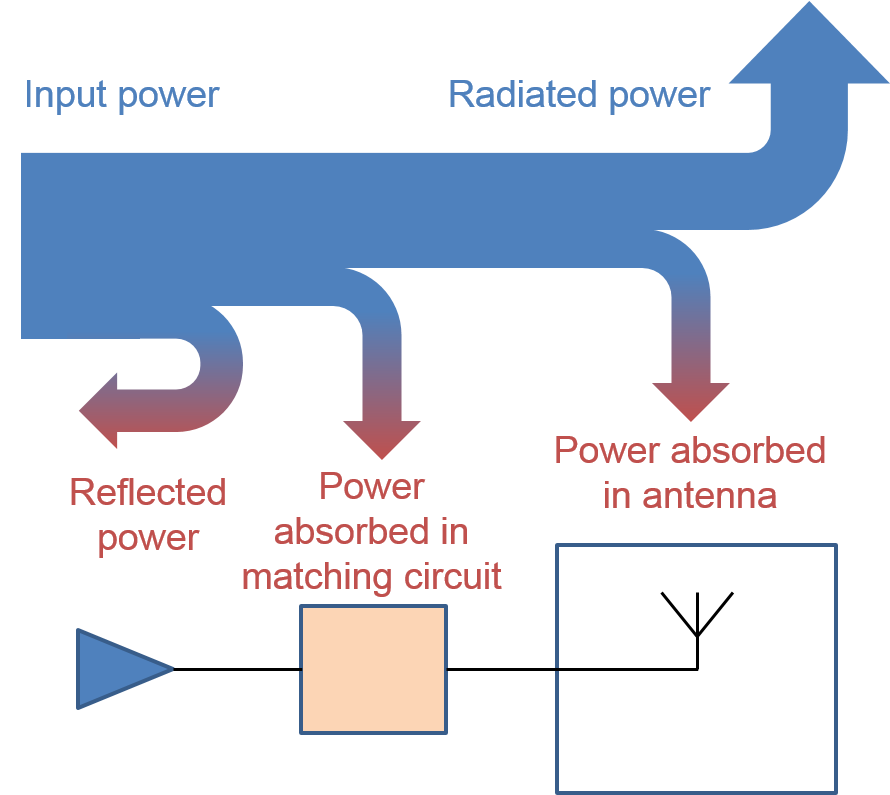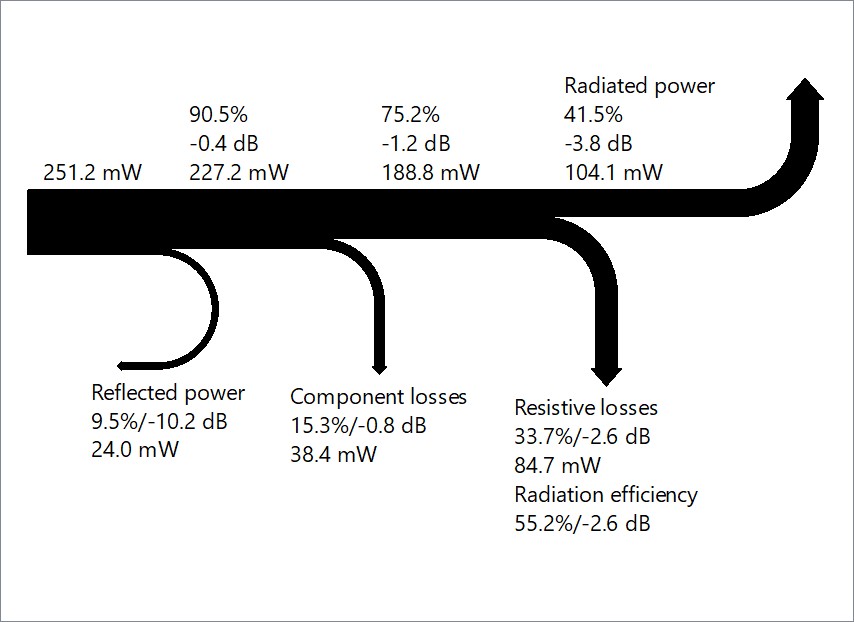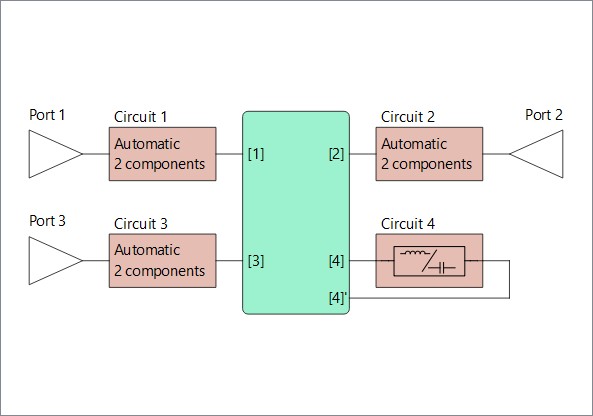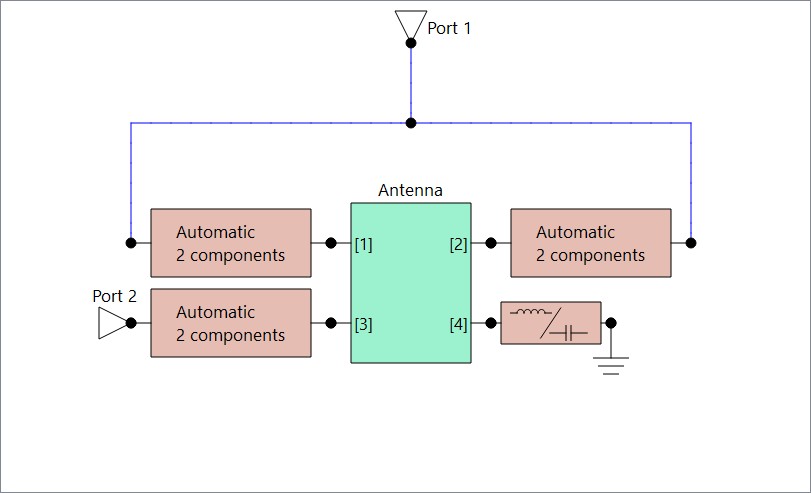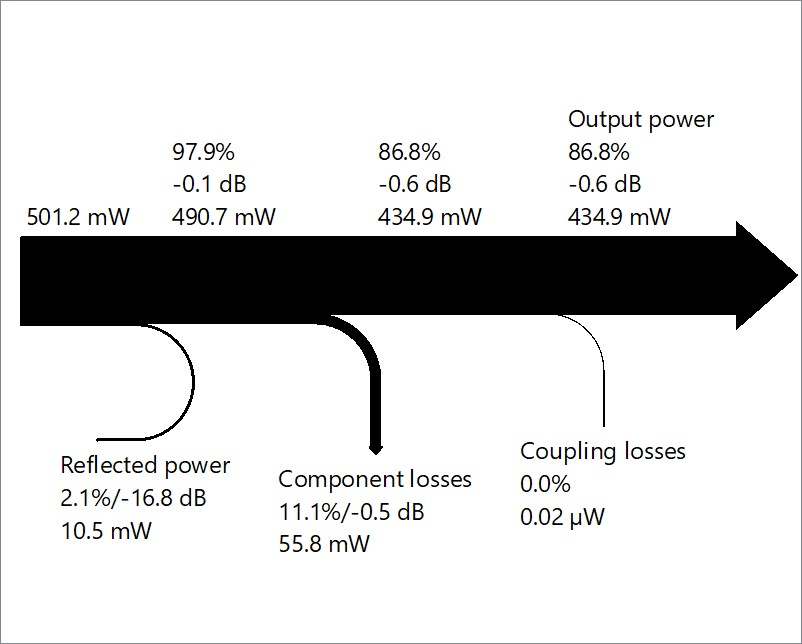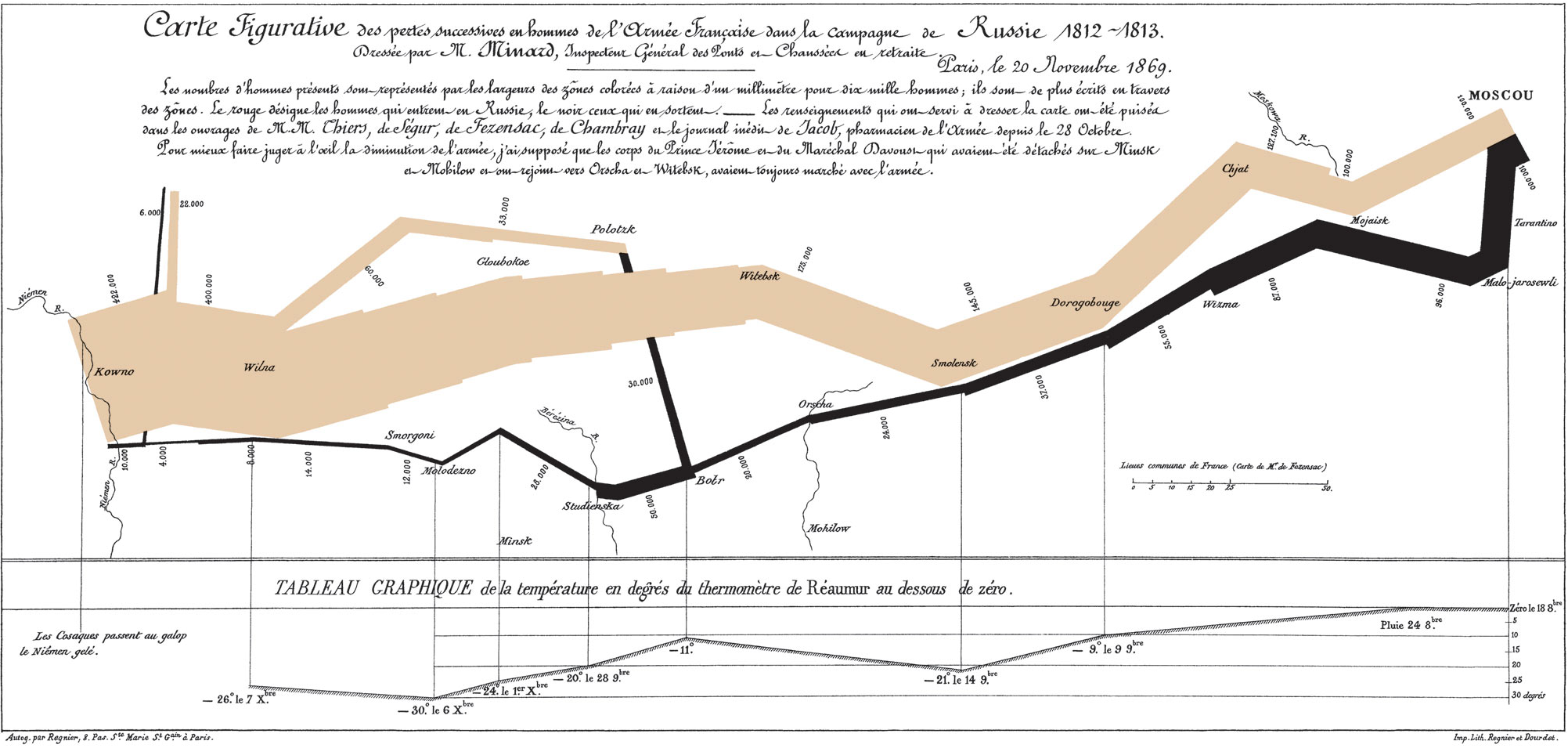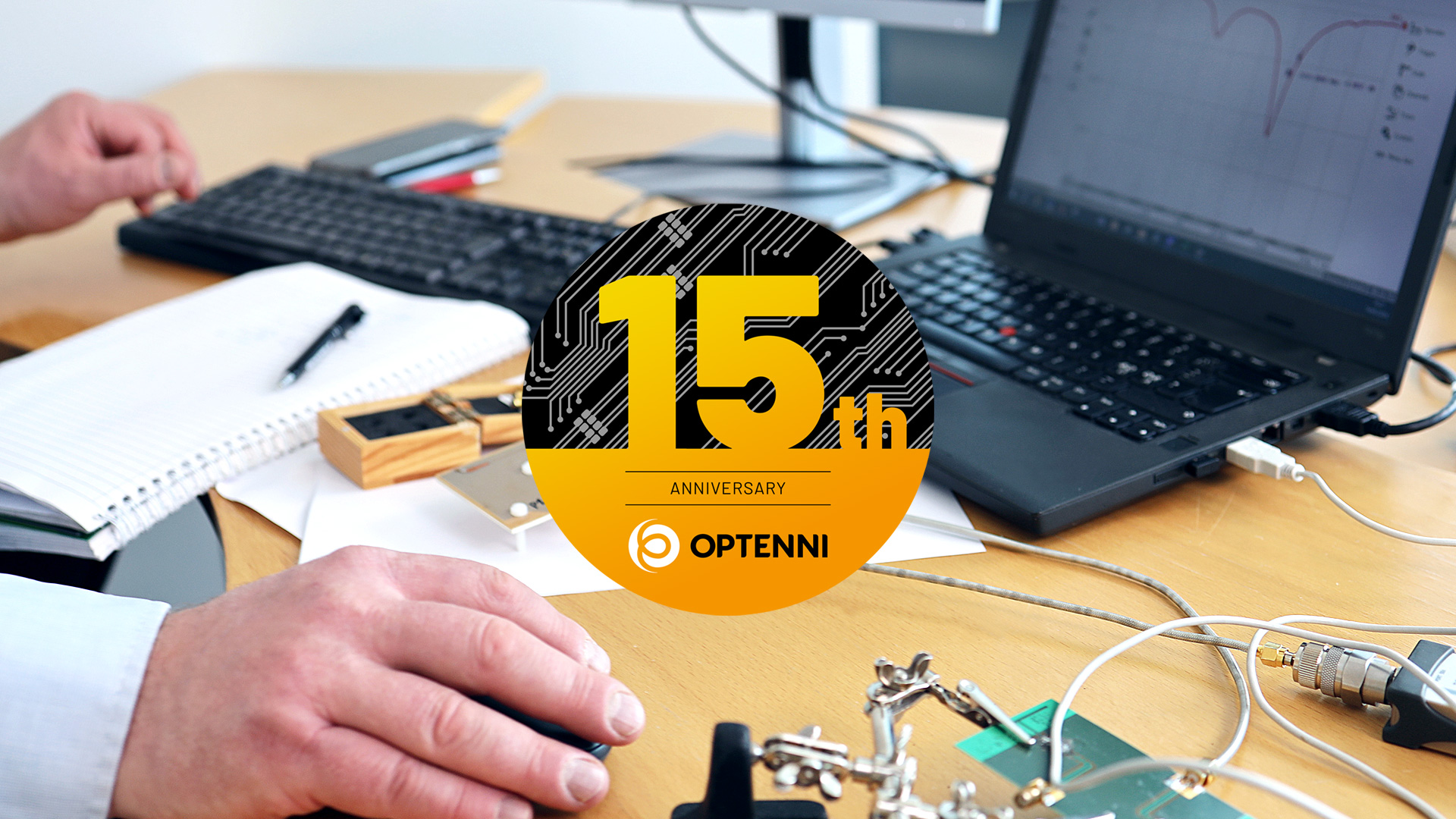
Optenni – 15 years of innovation in antenna and RF design automation
Posted by Jussi Rahola | 1 June 2024
I founded Optenni Ltd exactly 15 years ago and it has been the most exciting part of my professional career. Optenni has become an established player in the RF and antenna ecosystem, thanks to the work of Optenni employees and the collaboration with our customers, software and hardware partners and component vendors. In this blog article I would like to share some highlights along the journey.
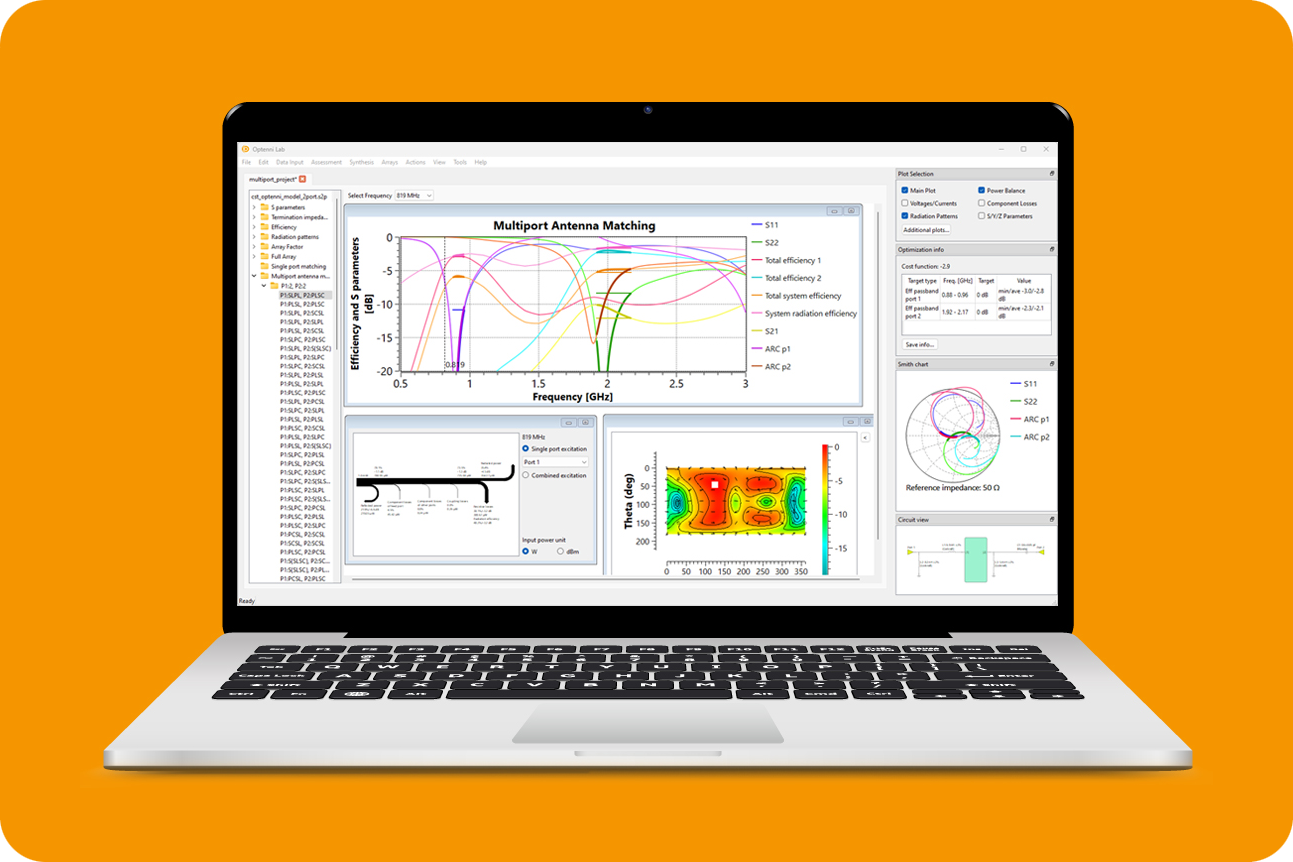
The idea for automated matching circuit synthesis software was born when I was working at Nokia Research Center in Helsinki, Finland. I saw that matching circuits had become an essential ingredient of mobile phone antennas and thus there should be a market for tools to speed up the matching circuit design process and to ensure that the best efficiency of the antenna system is reached.
Optenni was registered as a company in June 2009 and already the following year the initial version of Optenni Lab was released. The first conference trip for Optenni was to the European Conference on Antennas and Propagation (EUCAP2010) organized in Barcelona, Spain, from where the return trip became quite memorable: due to the eruption of the volcano Eyjafjallajökull in Island, instead of a four-hour flight the return trip became a three-day journey by busses, ferries and trains!
Over the years, we have constantly increased the capabilities and features of Optenni Lab. Below you can see the timeline of the major development steps:
- 2010: Initial version of Optenni Lab with single-port matching circuit synthesis, bandwidth potential for estimating obtainable bandwidth and electromagnetic isolation for calculating worst-case isolation
- 2011: Component library of inductors and capacitors
- 2011-2015: Links with leading electromagnetic simulators
- 2013: Simultaneous multiport matching circuit synthesis
- 2014: Optimization of tunable matching circuits
- 2014: Link with network analyzers
- 2016: Optimization for switchable matching circuits
- 2017: Optimization of matching circuits for antennas in multiple different usage environments
- 2019: Support for antenna radiation patterns
- 2020: Array beamforming optimization and total scan pattern analysis of phased arrays
- 2021: Effective Isotropic Radiated Power (EIRP) calculations for antenna arrays
- 2023: Schematic entry environment to support the synthesis and optimization of complex synthesis task with arbitrary connectivity
- 2023: Separate control of optimization and plotting frequencies for each optimization run
A central theme in the development of Optenni Lab has been the collaboration between other partners in the wireless ecosystem, which is manifest in the following ways:
- Simulator links: we have developed links between leading electromagnetic simulators, such as CST Studio Suite by Dassault, HFSS by ANSYS, FEKO by Altair and XFDTD by Remcom. Impedance and radiation pattern data can be sent from these simulators to Optenni Lab with a few mouse clicks. We are also able to send the circuit components optimized by Optenni Lab back to the circuit simulators of CST and HFSS.
- Network analyzer links: Optenni Lab can connect to network analyzers from leading measurement companies, such as Anritsu, Copper Mountain Technologies, Keysight and Rohde & Schwarz. Optenni Lab can optimize matching circuits in real time based on the measurement data.
- Radiation pattern measurement data: Optenni Lab can read antenna radiation pattern data from leading antenna measurement systems, such as those by MVG, ETS-Lindgren and Rohde & Schwarz.
- Component library: Optenni Lab contains an extensive library of realistic inductor and capacitor models from leading component suppliers like Murata, TDK, Taiyo Yuden, Coilcraft, AVX and Johanson Technology.
Optenni Lab has become a powerful circuit simulation tool for antenna and RF design and optimization with the following three unique features:
- Optenni Lab has built-in circuit synthesis capabilities
- Optenni Lab understands both circuit quantities (S parameters, voltages, currents) and antenna quantities (efficiencies and radiation patterns)
- Optenni Lab is focused on maximizing the total efficiency of antenna systems
The benefits of Optenni Lab can be summarized in the three following verbs: Explore, Accelerate, Maximize:
- Optenni Lab’s innovative assessment tools (e.g. bandwidth potential, electromagnetic isolation, total scan pattern) allows you to explore theoretical limits to rank different antenna design candidates and to reveal the theoretical upper limits of wireless performance.
- Optenni Lab accelerates your design flow by quickly and accurately synthesizing matching circuits using realistic component models. Optenni Lab is especially powerful in the design of frequency tunable RF circuits.
- Optenni Lab is designed to maximize the wireless performance, taking into account various loss sources and layout effects. Robust designs with respect to varying usage environment of the antenna can automatically be synthesized.
We are happy to see that leading wireless companies worldwide have adopted Optenni Lab to support their design flow. Our customer base ranges from single-person design companies to large technology giants in Europe, North America and Asia. We are proud that 7 out of the 10 biggest technology companies in the world are our customers.
Going forward, we are committed to further innovations in RF and antenna design automation. We are a heavily customer-driven company, and we are complementing customer ideas with our own innovations to broaden the applicability and to increase the usability of Optenni Lab.
To celebrate the 15-year journey we are planning some physical and online events later this year. Stay tuned for additional information on this.
I would like to personally thank all our customers for their collaboration and constructive feedback for the development of Optenni Lab, our partner companies for enabling the interoperability of simulators, measurement data and simulation models and finally the innovative and dedicated Optenni staff who have made our common journey so inspiring and interesting.
CEO Jussi Rahola
Email: jussi.rahola (at) optenni.com
